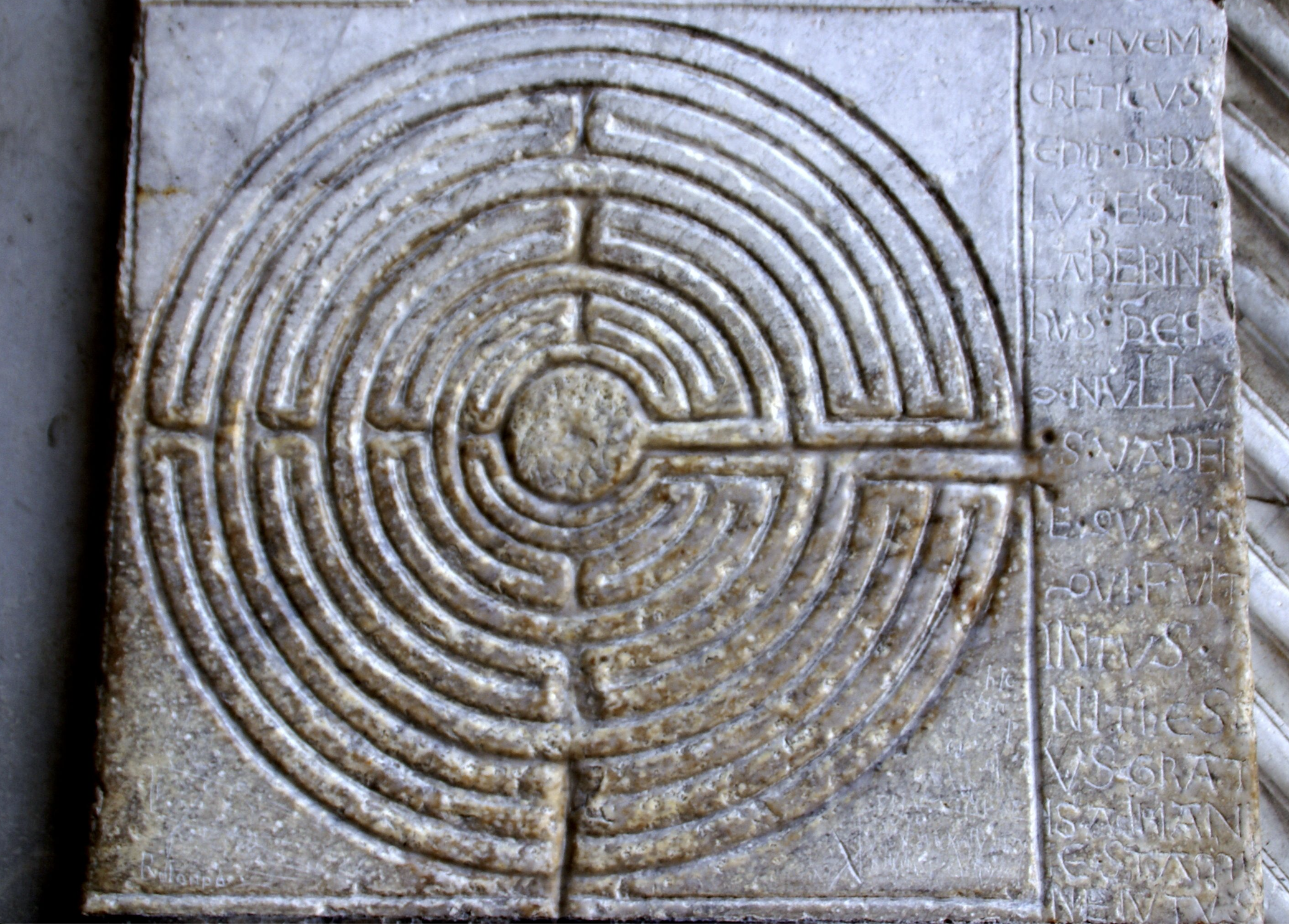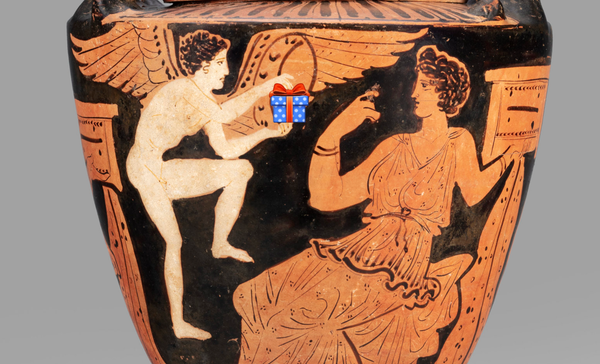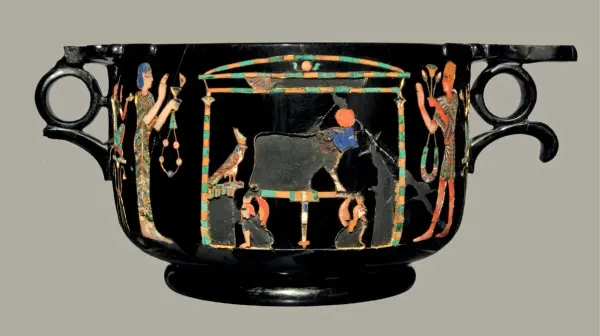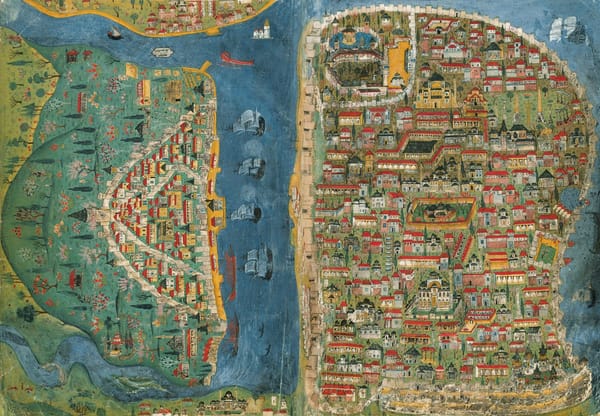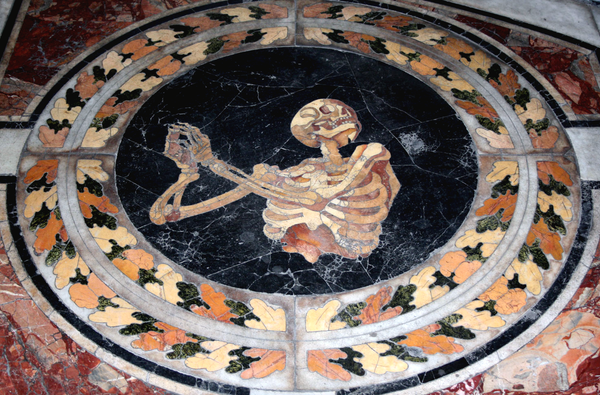Pasts Imperfect (8.29.24)
Dark Academia, Ancient Trees, Mastodons in Iowa, Woolly Dogs, and More
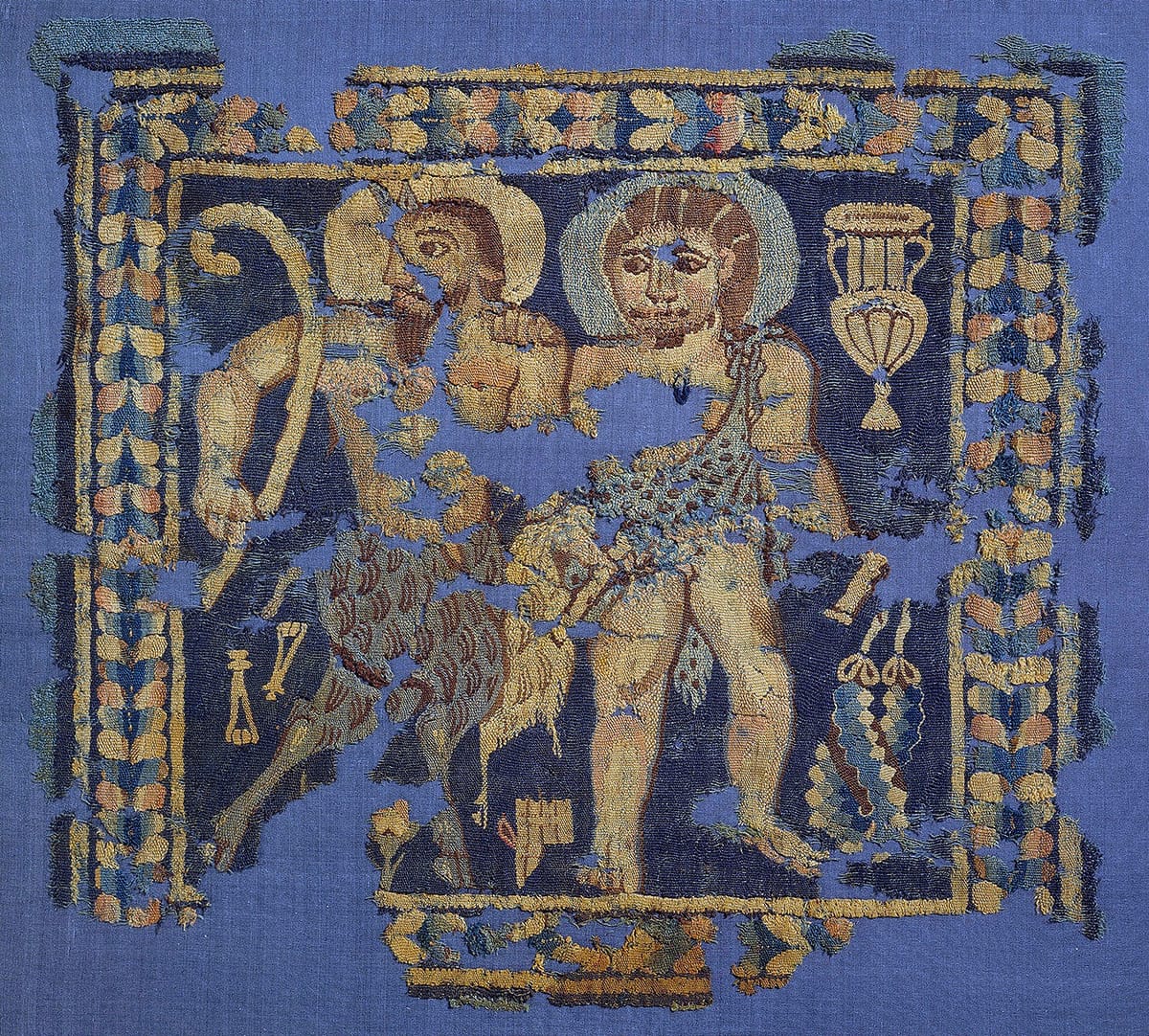
This week, we’re back to school! Tori Lee kicks off AY 24-25 with a good old fashioned shopping guide for Dark Academia. Then, we dive into new NEH awards for analyzing everything from DNA residue in parchment to Aramaic Dead Sea scrolls; a new art exhibition about hyperlocal climate change; ancient recycling techniques; woolly dogs among the Indigenous Coast Salish peoples; a Roman sarcophagus’s second (or third) life; a new exhibition on the Global Middle Ages opens in Cleveland; new ancient world journals, and much more.
The Dark Academia Manual of Style by Tori Lee
Friends: Classes are starting, Starbucks has released its fall drinks, and retailers are beginning to advertise sweaters to us despite the fact that it is 87 degrees out where I am currently sitting. If the impending fall signals one thing to jaded academics mourning the end of their summers, it is that it’s time to assuage our sadness once more by romanticizing our chosen profession. And what better way to do so than by succumbing to the tantalizing pull of Dark Academia?
To be clear: I love Dark Academia. I will be the first to admit that its mid-2000s Xanga precursors (iykyk) are part of the reason I flung my teenage self headlong into studying Latin, embarking upon the long and winding path that brings me here today. I do, however, also think that DA glorifies an unhealthily workaholic lifestyle and idealizes a whitewashed, Eurocentric image of the academy that only upholds the racist and classist hierarchies that are intertwined with the foundations of Classics as a discipline. I unpack some of these tendencies in a recent piece in Classical Receptions Journal, where I also argue that the place for positive change in the Dark Academia subculture (if that’s possible) is not academic journals, but the online sphere that bore it. So, in the following piece I hereby solve the puzzle of how to acknowledge the appeal of Dark Academia for classicists while affirming the need to also work at all times towards decolonizing and diversifying the discipline.
(It’s a style guide. I hope you enjoy it.)
- Channel the Woman in White
A Bridgerton-esque, off-white empire waist dress, like this one from the Met Museum (image public domain) can easily transition from summer (style it as cottagecore with a flower crown and leather sandals) to fall. For peak Dark Academia vibes, pair with dark shoes and a cardigan in a different shade of ecru, and roam the library stacks at night.
The inspiration:
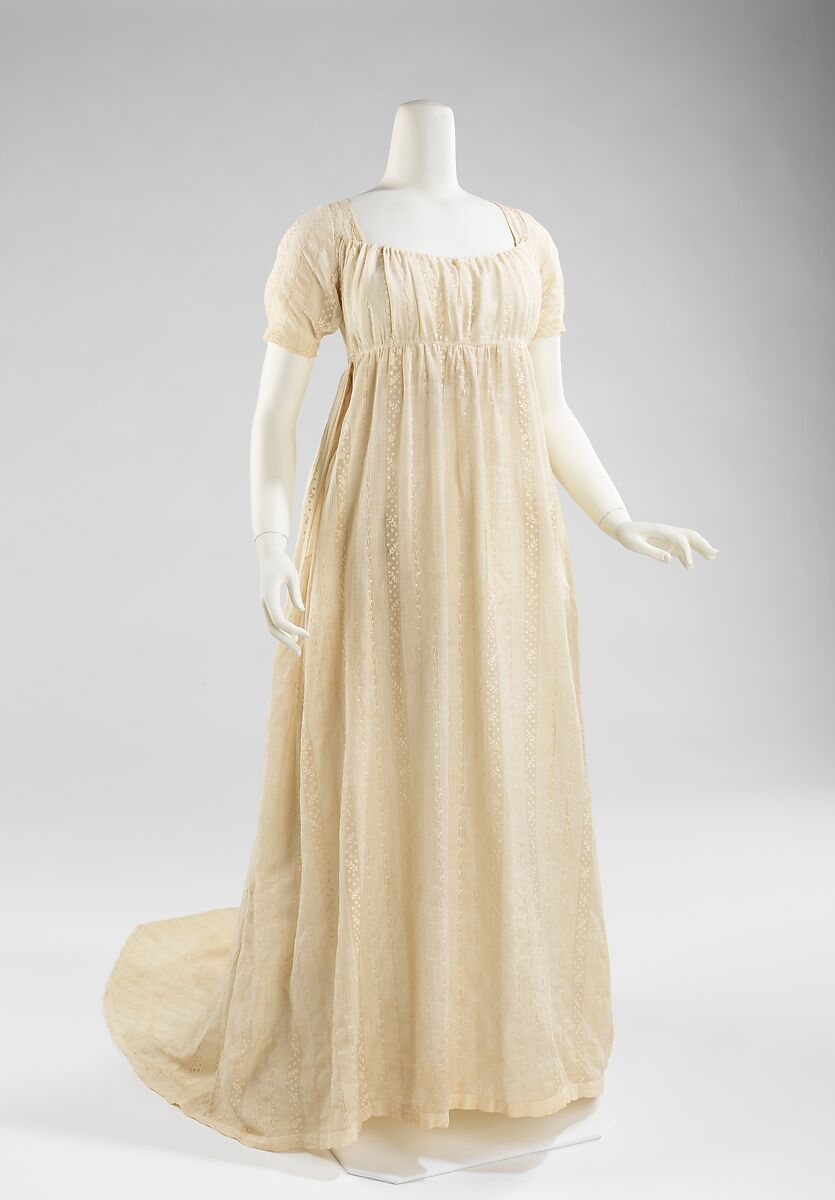
Get the look on any budget:
- Grad student: How to be sustainable without spending a fortune? Thrifting. A drapey, cream-colored dress like this or this (or from Walmart for $34?) + a soft sweater like this or this to keep you cozy while you study for quals. Add some oxfords to run to class.
- Junior scholar: Pair this crepe J.Crew dress or this floral number from Modcloth with a fisherman’s cardigan and a pair of sustainably-made warm brown oxfords.
- Tenured faculty: This linen jumpsuit is made to order in your custom measurements by a woman-owned business that uses only plant-based dyes and fabrics. Or be a little dressier with this silky jacquard version. Complete the ~monochrome look~ by adding a chunky, off-white cardigan when the chill breeze starts to whip up the leaves around your lovely longwing oxfords (note: these come in men’s sizes only).
- Put a bow on top
Bows are back. Channel your inner Jane Austen heroine and take a stroll down to the shops to order a length of ribbon or two. Green velvet provides a pop of color while still looking ✨demure✨ and ✨mindful✨, and check out these dark academia bow hairstyles for natural hair.
The inspiration (Met Museum open access):
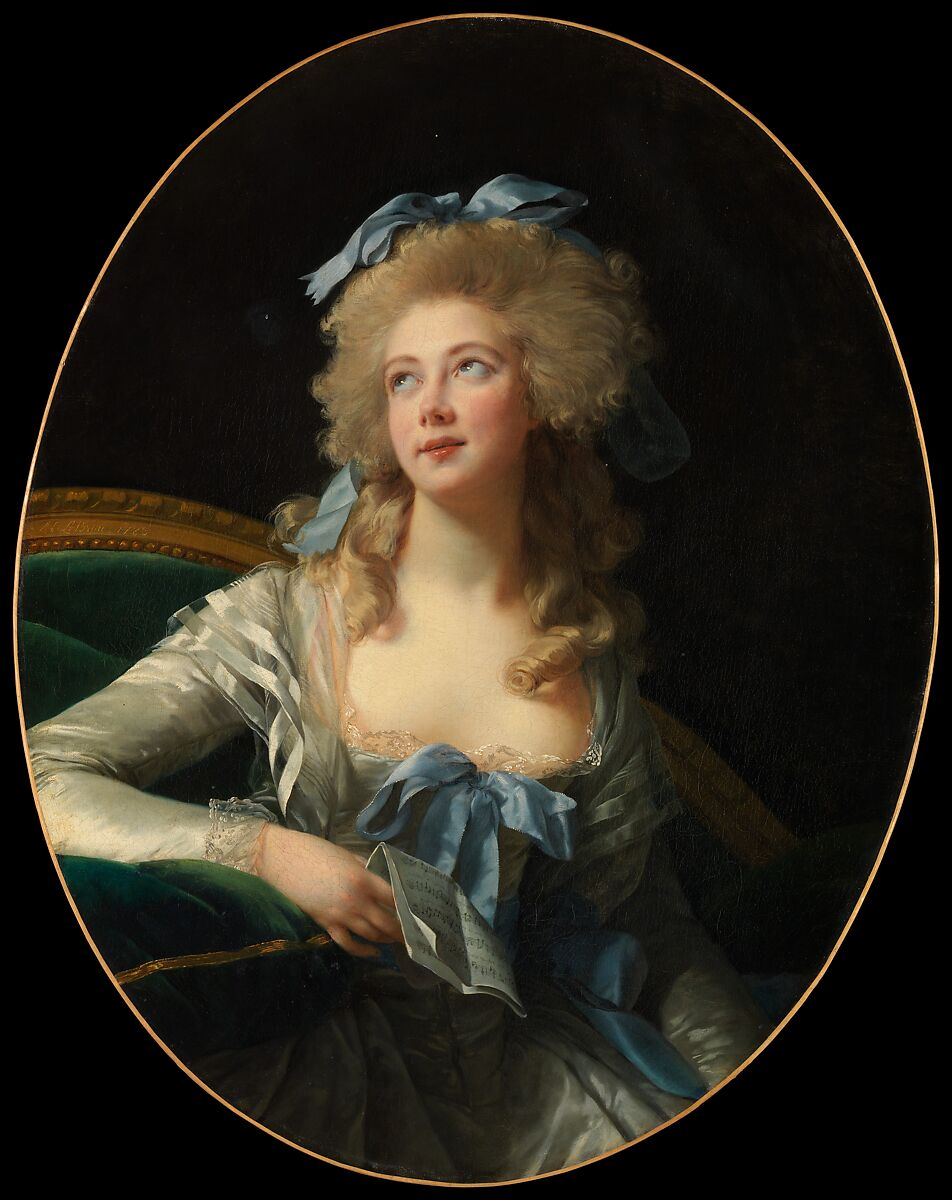
Get the look:
- Grad student: Black velvet, pop of color, satin multipack
- Junior scholar: Black satin, pop of color, organza
- Tenured faculty: Black satin, pop of color, crystal pinstripe
- A ruffled blouse
For when you want to give Jerry Seinfeld’s pirate shirt, but you don’t want to be a pirate, you want to be a mysterious poet/playwright in an oil painting. Pair with a plaid skirt and loafers for peak back-to-school vibes.
The inspiration (Unsplash):

Get the look:
- Grad student: Black and white plaid, mock neck, or open front with a mini pencil skirt, short wool, or midi wool.
- Junior scholar: Mock neck or brown linen with an a-line skirt or pleated skort.
- Tenured faculty: White short sleeve, sheer, or blue and white stripe with a midi skirt or midi kilt.
- Don’t forget your deskscape!
Is deskscape a word? It’s not giving me a squiggly underline, so I’m going with yes. If you’re toiling away at work, it might as well at least look aesthetic. Don’t neglect the potential to clutter your desk with ceramic mugs, totes from a literary magazine or bookstore, and books with attractive spines and pretty fonts.
The inspiration (Unsplash):

Get the look:
- Grad student: Kerosene-lamp-inspired glass lamp or gothic crow lamp (obviously the best choice no matter what your budget), Shakespeare and Co. tote or Victorian Strand tote, ribbed stoneware mug or reactive glaze ceramic mug. Add a Loeb for full effect.
- Junior scholar: Tassel table lamp or vintage brass desk lamp, Getty floreal tote or Dracula book tote, Le Creuset metallic handle mug or handmade stoneware mug. Strew about your handwritten notes from your last conference that you will never read again.
- Tenured faculty: Green glass table lamp or rattan dome lamp, New Yorker tote (with digital subscription of course) or Met logo tote, temperature control smart mug or Tiffany toile mug. Idk what else is on the desk. Give me a job and I’ll update this post in six to seven years.
Editors’ note: Send us a photo of your Dark Academic aesthetic (floppy leather messenger bag, anyone?) and Stephanie will make a collage for our next post, and then she will think about reviving her long-dead Tumblr, and then she will cringe so hard she will throw out her back.
Before we get started on the news recap, Abby Wilson at Better Homes and Gardens has Dark Academia home decor style guide if your cozy nook with rain-spattered windows needs a face lift.
Public History and a Global Antiquity
In July, UNC-Asheville Classics professor Brian Hook (co-editor of the fabulous The Global Humanities Reader) wrote a moving Medium post on “How I Lost My Job As A Tenured Professor.”
Let me explain. I teach at a small public university. Our enrollment dropped 25% over four years. My department did not cause that. But declining enrollments mean declining revenue: our tuition dollars fell, and state allocations are based on our enrollments. To address the deepening budget crisis, our new chancellor decided to cut four academic programs, including mine. I teach Classics, that is, Greek and Latin literature, language, history, and culture. I’ve taught at my university for 24 years. Next year could be my last.
I am still thinking about his words a month later.
'Tis the season for NEH awards, and we just wanted to say that this batch looks great. There are awards for DNA analysis of parchment manuscripts from the Folger Shakespeare Library and Daniel Machiela’s funded project on “The Aramaic Dead Sea Scrolls at the Crossroads of Empire: Negotiating Jewish Life Under Foreign Rule.” Funds also went to “The Antefixa Project: Recovering Lost Craft Communities in Ancient Italy,” along with Caitlín Barrett’s and Kathryn Gleason’s fascinating project uncovering lived experience at Pompeii through a virtual model of a Pompeian house and garden. Of note is also Egyptologist Peter Der Manuelian’s “[p]reparation for print publication of hand-written diaries of Egyptian foremen who assisted American archaeologists in their excavations from 1913 to 1947” in order to recover the “Ghost Writers of Upper Egypt.”
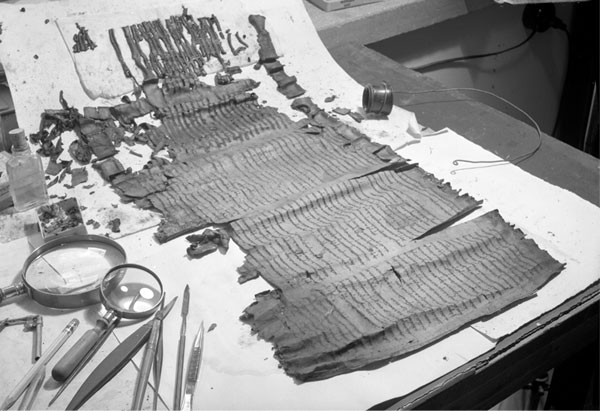
A reconstructed Bronze Age ‘Magan Boat’ recently sailed the Arabian Gulf once more. The materials for the boat were described on a Sumerian cuneiform tablet now at the British Museum in London. Modern shipwrights used techniques from 2100 BCE. As NYU Abu Dhabi noted in a press release, “The ‘Magan Boat’ project is an experimental archaeology initiative from Zayed National Museum in partnership with NYU Abu Dhabi and Zayed University.” Although we are big fans of reconstructive archaeology, it doesn’t distract from the fact that the UAE still “continue[s] to subject migrant workers to the exploitative and restrictive system known as Kafala.” As reported by Inside Higher Ed, students and professors at NYU-Abu Dhabi are also censored and silenced on the issue of Palestine. I mean, archaeology is great, but collaborating with governments that support human rights is much more important.

Artist Imani Jacqueline Brown was profiled in the New York Times by Siddhartha Mitter, and I am enraptured by her new exhibition, titled “Gulf.” Brown’s work focuses on climate change, Indigeneity, and sustainability in her home city of New Orleans, Louisiana.
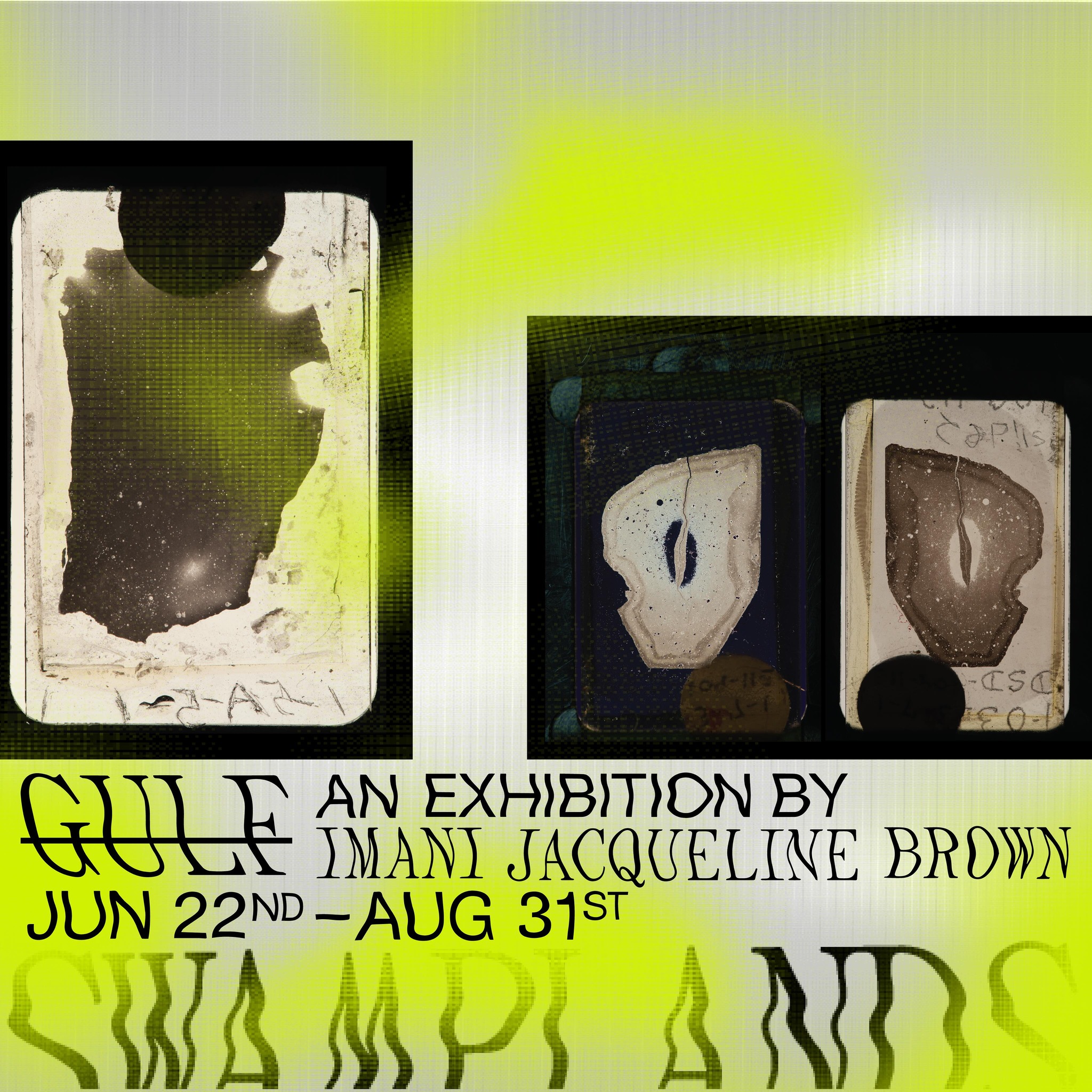
People, 2025 is soon upon us and it will be time to vote for the European Tree of the Year! Get to know some of the shortlisted candidates, including one 1,200-year-old oak with the UK’s largest tree girth: 46 feet! Side note that Andrew Fox’s Trees in Ancient Rome: Growing an Empire in the Late Republic and Early Principate (2023) is a fun read which also makes you want to plant a fig tree.
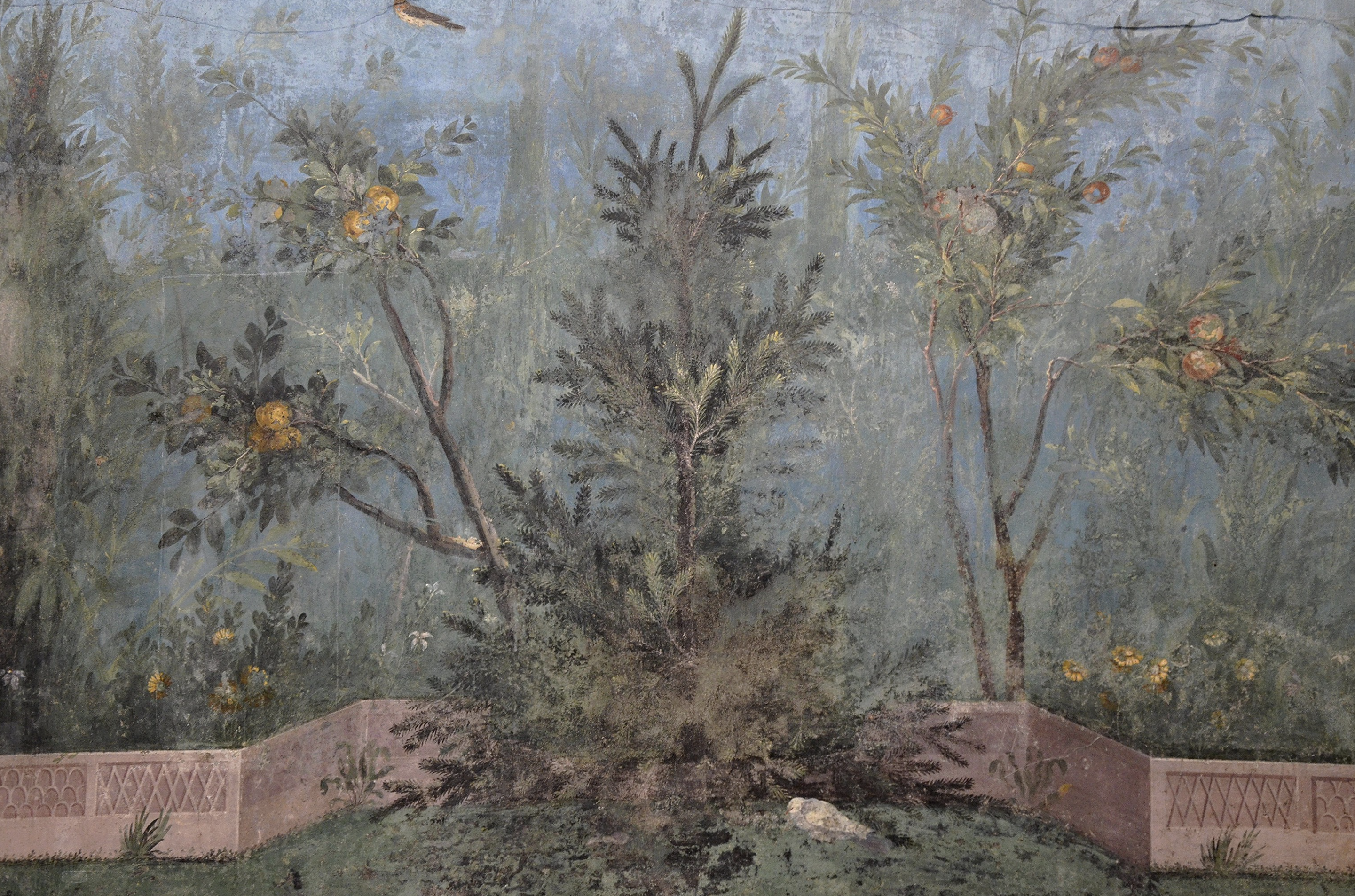
WBUR’s On Point stays on point with this episode about using ancient processes to recycle plastic waste. Journalist and radio producer Meghna Chakrabarti speaks with several guests about pyrolysis—no extra credit if you deduce the etymology, you nerds. After listening to this episode, my panic about the futility of plastic recycling subsided. Only a bit. But it did subside.
Over in Archaeology magazine, the editors are focusing in on the challenges and possibilities of Ancient DNA for the September issue. There is a great article on DNA and “Maya Power Plants,” Ancient Rome and “The Empire's Genome,” woolly dogs among the Indigenous Coast Salish peoples, and an essay on modeling Assyrian DNA.
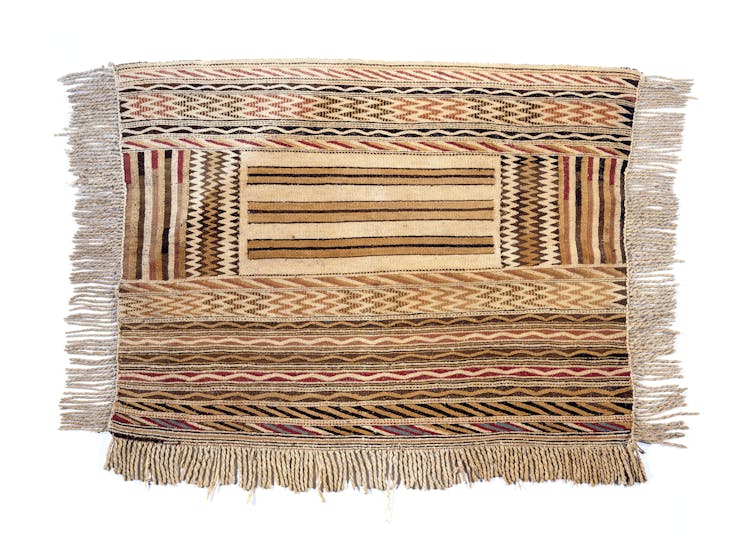
I felt so unbelievably seen by Franz Lidz’s article in the Times about ancient scribes’ ergonomic injuries. If only the ancient Egyptians had my lumbar support rolly chair. Bummer!
For all their prestige, the scribes of the third millennium B.C. faced many of the same occupational hazards as the desk jockeys and keyboard warriors of today.
Loving this story from the Miami Herald: an ancient Roman sarcophagus’s second life as a bar table at a Bulgarian beach. You know, maybe this is what the Romans wanted us to do with their artifacts.
The latest Multicultural Middle Ages Podcast features Tanvir Akhtar Ahmed and Sabauon Nasseri on “Making Afghanistan Medieval” from British colonization to the War on Terror. And medievalists take note, the podcast is accepting proposals for its fourth season until October 12th.
You want premodern? We got premodern. Archaeologists at the University of Iowa dug up some awesomely ancient (13,600 years, thereabouts) mastodon bones in southern Iowa. As Iowa Now reports, dating is important because it overlaps with occupation by humans in the region.
New Antiquity Journal Issues (by @YaleClassicsLib / yaleclassicslib.bsky.social)
Revista de Estudios Clásicos Vol. 56 (2024) #openaccess
Istanbuler Mitteilungen Vol. 73 (2023) #openaccess
Orientalistische Literaturzeitung Vol. 119, No. 1 (2024)
Rhizomata Vol. 12, No. 1. (2024)
Eranos Vol. 114 No. 2 (2023) #openaccess
Bamboo and Silk Vol. 7, No. 2 (2024)
Journal of Eastern Mediterranean Archaeology and Heritage Studies Vol. 12, No. 3 (2024)
Noctua Vol. 11, No. 2 (2024) #openaccess
Karthago Vol. 32 (2020-2024) NB Jehan Desanges “Libyes et Afri: Nouvelles lueurs sur la fortune sémantique de deux ethnonymes”
Synthesis Vol. 31 No. 1-2 (2024) #openaccess Gestualidad en el teatro griego antiguo. Los gestos y el cuerpo en el texto y en la escena
Aramaic Studies Vol. 22, No. 1 (2024)
Journal of Egyptian History Vol. 17, No. 1 (2024)
American Journal of Philology Vol. 145, No.1 (2024) Women in Republican Rome: Space, Religion, and Influence
Journal for the Study of Judaism Vol. 55, No. 3 (2024) NB Moshe Blidstein “Perpetual Fires in the Jerusalem Temple through a Mediterranean Perspective”
Latomus Vol. 83, No. 1 (2024)
Archaeological Papers of the American Anthropological Association Vol. 35, No. 1 (2024) Finding Fields: The Archaeology of Agricultural Landscapes
Classical World Vol. 117, No. 4 (2024) NB Christine L. Johnston, Chelsea A.M. Gardner “Digital Media and Online Resources in Ancient Mediterranean Teaching”
Early Science and Medicine Vol. 29, No. 4 (2024)
Revista Española de Filosofía Medieval Vol. 30, No.2 (2023) #openaccess NB Tineke Melkebeek “Female Rulers, Motherhood and Happiness: A Reconsideration of Averroes’ Comparison of Women to Plants”
TAPA Vol. 154, No. 2 (2024) NB Peter Osorio, “The Platonic Epistles and Fanaticism in the History of Philosophy: Meiners, Tiedemann, and Kant”; Erika Valdivieso “Searching for Dido in the Latin Epics of Colonial Mexico”
Lectures, Exhibitions, and Workshops
The museum exhibition “Creation and (Re)Birth in the Global Middle Ages” just opened at the Cleveland Museum of Art. As Case Western Reserve notes, “The exhibition, co-curated by Professor Elina Gertsman and Dr. Gerhard Lutz, is a culmination of several years of collaboration between the medieval art program at Case Western Reserve University and the Cleveland Museum of Art, made possible by the support of the Mellon Foundation. Its final form was developed in the Mellon collections seminar co-taught by the two curators last fall. Graduate students in the seminar wrote wall text and object labels, and several contributed to the gallery booklet, available to museum visitors at the exhibition. For more…please see here.”
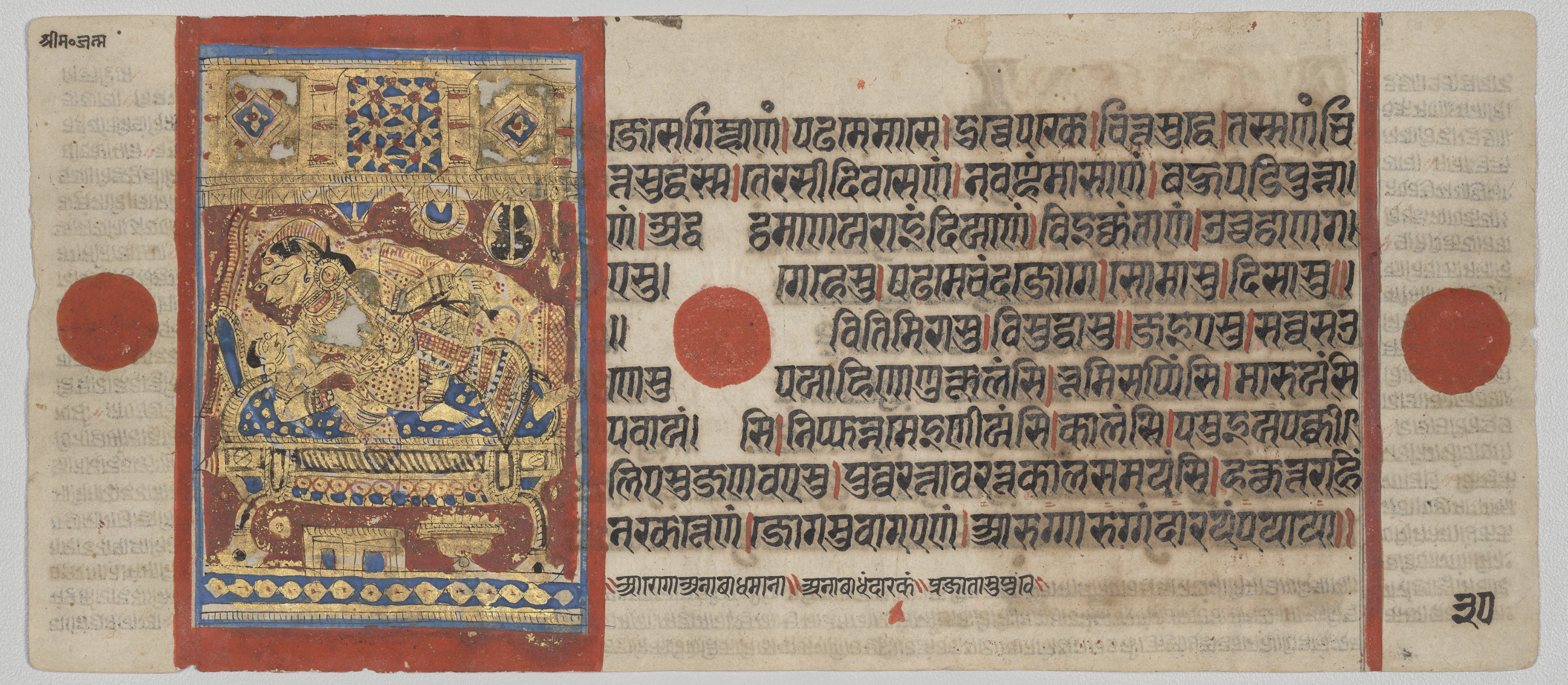
The third session of EuGeStA - Gender Studies and Classical Scholarship meetings will occur on zoom on September 16th at 11am EST. It will include discussions of Katharine O'Reilly and Caterina Pellò’s edited volume Ancient Women Philosophers (Cambridge 2023) and Melissa Funke’s Phryne, a life in fragments (Bloomsbury 2024). Fill out this form if you are interested in attending.
The European Society for Environmental History has a CFP with a deadline on October 31, 2024. The theme of the conference is “Climate Histories,” and as they note, it “aims to synthesize historical research on climate variability with present-day lived experiences, to further discourse and enrich perspectives on contemporary climate change.” It will be in Uppsala, Sweden in August 2025. They want to move beyond Eurocentric narratives and look at global climate histories from antiquity to the modern era, so why not submit an abstract?
The Institute of History of Mediterranean Europe (ISEM) of the Consiglio Nazionale delle Ricerche (CNR), in collaboration with the IN-HOPPE network (International Network–Historical and osteoarchaeological Past Populations Exploration), is organizing a congress on reactions and emotions in the face of epidemics in the pre-industrial age. This will be held in Naples from June 4-6, 2025. The conference organizers welcome interdisciplinary approaches to the topic of epidemics before the era of modern bacteriology. Papers may be presented in English, Italian, Spanish or French.The deadline for submission of abstracts is 1 November 2024. Notification of acceptance will be made by January 15, 2025. See the flyer for more information.
Love PI and want in on the action? We’re working on our fall lineup! If you have a pitch as a guest editor, shoot us a message here.

Thanks for reading Pasts Imperfect! Subscribe for free to receive new posts and support our work for a global antiquity.
